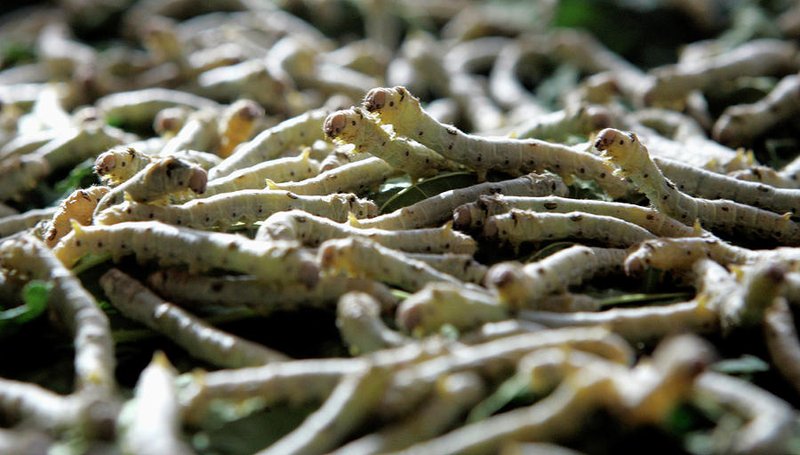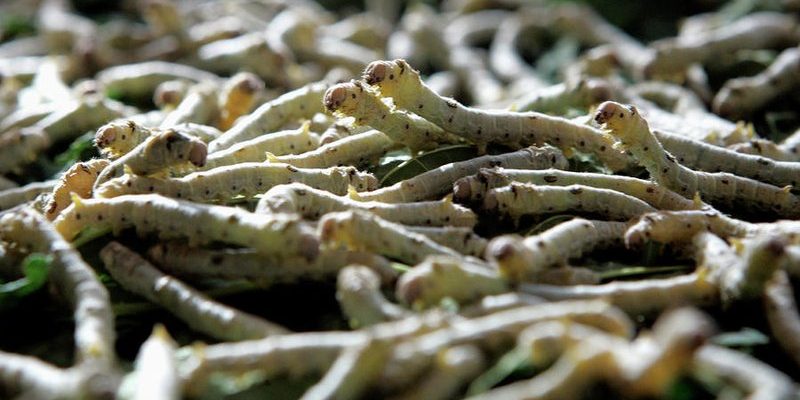
Honestly, feeding aquatic pets and reptiles is like creating a balanced meal for a picky toddler. You need to find the right ingredients that not only meet their nutritional needs but also appeal to their taste buds. Silkworms, often praised for their rich texture and flavor, can help you do just that. So, let’s dive deeper into the world of silkworms as feed, and explore why they might just be the perfect addition to your pet’s diet.
What Are Silkworms?
Silkworms are the larvae of the silkworm moth, scientifically known as *Bombyx mori*. They are famous for producing silk, but what many people don’t realize is that they also serve as excellent food for various animals. These worms are typically raised on a diet of mulberry leaves, which makes them rich in proteins, vitamins, and minerals.
You might be wondering why anyone would choose silkworms over traditional feeders like crickets or mealworms. Here’s the thing: Silkworms have a soft, chewy texture that many reptiles and fish find irresistible. Their high moisture content also adds hydration to the diet, which is especially beneficial for certain species.
Moreover, silkworms are lower in fat compared to other feeder insects. This can help prevent obesity in pets that tend to overeat, which is a common issue with some reptiles and fish. By incorporating silkworms, you’re not only giving your pets something tasty but also keeping their health in check.
Nutrition Breakdown
One of the best things about silkworms is their impressive nutritional profile. They are typically around 60% protein by dry weight, containing essential amino acids that are crucial for growth and overall health. Let’s look at some key nutrients:
- Protein: Silkworms are an excellent protein source, which is essential for muscle development and energy.
- Fat: They have a reasonable fat content, making them a balanced choice for many reptiles and fish.
- Vitamins: Silkworms provide important vitamins, particularly B vitamins, that support metabolism and energy production.
- Minerals: They also contain minerals like calcium and phosphorus, which are vital for bone health and metabolic functions.
To make it even simpler, if your reptiles or fish were to rate their meals, silkworms would likely earn a solid five stars. Their crunchy-on-the-outside, soft-on-the-inside texture, combined with nutritional benefits, makes them a superior option for many pet owners.
How to Feed Silkworms to Your Pets
Feeding silkworms to your reptiles or fish is pretty straightforward. Here’s a step-by-step guide to help you get started:
1. **Choose the Right Size:** Select silkworms that are appropriately sized for your pet. Smaller reptiles and fish can manage smaller silkworms, while larger species can handle bigger ones.
2. **Introduce Gradually:** If your pet has never had silkworms before, start by introducing them gradually. Offer one or two and observe how your pet reacts.
3. **Watch for Preferences:** Pay attention to your pet’s interest. If they seem enthusiastic, you can increase the quantity. If not, it might take some time for them to adjust to this new food.
4. **Clean and Fresh:** Always ensure the silkworms are clean and fresh. If they’re canned or dried, check the expiration date and storage instructions.
5. **Balance Their Diet:** While silkworms are a great addition, they shouldn’t be the only food your pets eat. Combine them with other appropriate foods to ensure a balanced diet.
By following these steps, you’ll be well on your way to adding silkworms into your pet’s meal rotation.
Comparing Silkworms with Other Feeders
Now, let’s take a moment to compare silkworms with some traditional feeder options like crickets and mealworms.
– **Crickets:** These are popular feeder insects, but they can be high in fat and low in certain nutrients. Silkworms, on the other hand, offer a more balanced nutritional profile with higher protein and moisture content.
– **Mealworms:** While mealworms are a common choice, some reptiles may struggle to digest them due to their hard exoskeletons. Silkworms are softer and easier to consume, making them a better choice for younger or more delicate animals.
– **Superworms:** Similar to mealworms, superworms can also be tough for some pets to digest. Silkworms provide a more user-friendly option while still being nutritionally beneficial.
Overall, silkworms often come out on top when it comes to nutritional value and ease of consumption. They might just be the secret ingredient in your pet feeding routine.
Where to Buy Silkworms
If you’re convinced that silkworms are the way to go, you might be wondering where to find them. Fortunately, they’re widely available and can be purchased from various sources:
– **Pet Stores:** Many pet stores carry live or dried silkworms, particularly those specializing in exotic pets. Visiting your local store can also provide a chance to ask employees for recommendations.
– **Online Retailers:** Websites like Amazon and specialized reptile food suppliers offer a variety of silkworm products, including live, canned, or dried options. Just make sure to read reviews to ensure quality.
– **Local Breeders:** Some enthusiasts breed silkworms and sell them locally. This can be a great way to get fresh, live silkworms while supporting local businesses.
When buying silkworms, always check for freshness, especially if you’re purchasing live ones. Proper care during shipping and handling can make all the difference in ensuring they arrive healthy.
Storing Silkworms
Storage is key when it comes to keeping your silkworms fresh. Here are some helpful tips:
– **Live Silkworms:** If you’ve bought live silkworms, keep them in a breathable container in a cool, dark place. Make sure they have enough food, like mulberry leaves or commercial silkworm feed, to keep them healthy.
– **Dried Silkworms:** Store dried silkworms in an airtight container in a cool, dry place. This helps prevent moisture from affecting their texture and nutritional value.
– **Canned Silkworms:** If you’re using canned silkworms, make sure to keep them sealed until you’re ready to serve. Once opened, store them in the refrigerator and use them within a specified timeframe.
By following these storage tips, you ensure that your silkworms remain nutritious and enjoyable for your pets.
Final Thoughts on Feeding Silkworms
Incorporating silkworms into your reptiles’ or fish’s diet can be a game changer. They offer a wealth of nutrients and appeal that many pets simply can’t resist. From their high protein content to their soft texture, silkworms stand out as a superior choice for feeding fish and reptiles alike.
Whether you’re new to pet care or a seasoned owner looking to diversify your pet’s diet, silkworms might just be the secret ingredient you need. So, the next time you’re stocking up on pet food, remember to give silkworms a chance. Your pets may thank you with some happy, energetic behavior that’s hard to miss.

